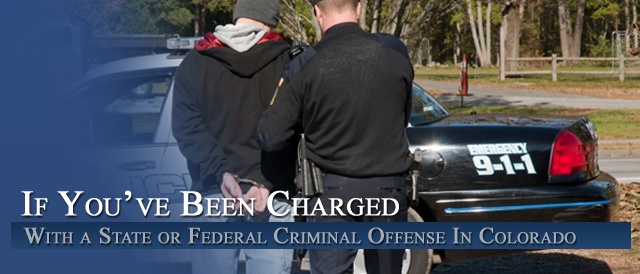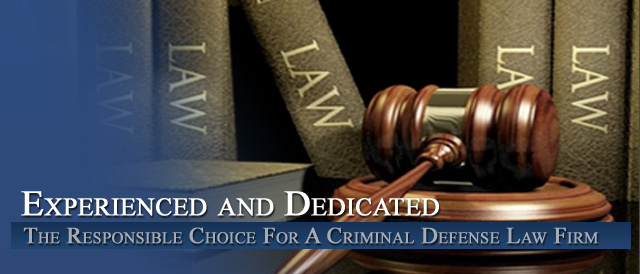




Detecting Deception – Or Why The Colorado and National Criminal Justice Systems Are So Poor At Finding The Truth
Questioning the ability of the criminal justice system to find the truth.
Article summarized and analyzed by Colorado Criminal Defense Lawyer – H. Michael Steinberg
Introduction – What follows is a summary and analysis of a fascinating book chapter about the failure of a criminal justice system – Canada’s to find the truth. The analysis is excellent and is equally applied to our own criminal justice system.
(Significant summarization and removal of social science references have been performed to ease reading and understanding).
How Do We Know WHO Is Telling The Truth?
A key role of judges and jurors at trial is to decide whether various witnesses are lying or telling the truth. But is it possible to determine accurately whether a witness is providing an honest version of events or lying through his/her teeth?
This issue is not trivial; in an adversarial system, most trials feature contradictory testimony by witnesses. In increasingly common “he said, she said” cases, there is little or no evidence other than conflicting stories told by a complainant and defendant, and decision-making is guided almost entirely by credibility assessments.
Credibility assessment is the “bread and butter” task for judges and juries in all trials. This article addresses the behaviors that are actually associated with deception, and the manner in which others (such as judges) assess credibility.
What Is Deception?
Deception is an important and common aspect of human social interaction present in much of interpersonal interaction. People admit to using deceit in 14% of emails, 27% of face-to face interactions, and 37% of phone calls and lie on average about two times per day.
Although most everyday lies do not carry heavy consequences, deception in the courtroom can have enormous consequences for both the individual and society. Despite the widespread use of deception, it is notoriously difficult to detect; when asked to determine whether another person is lying, most people, including police officers and judges perform at or only slightly better than chance.
Despite empirical findings that deception detection is a difficult task laden with errors, people are typically confident in their ability to spot a liar and consider it to be a simple assessment.
A long string of wrongful convictions in the United States overturned due to exculpating DNA evidence prove that the credibility assessment in the courtroom is a process fraught with error.
Such a low rate of accuracy suggests that they were actively attending to misleading cues and making mistakes.
Deception Detection by Police
The consequences of the failed identification of concealed and falsified information are enormous in many contexts, including suspect interrogations, customs agencies, airport security, and the courtroom. In their daily interactions with citizens, the ability of police officers to detect deception serves as a “front line” defense in the prevention of false allegations and the prosecution of guilty parties. Given their training and experience, one might expect that police officers would be especially skilled in this task.
However, research suggests that police officers perform no better than lay persons in deception detection tasks; like the average person, officers tend to “flip a coin” when making assessments of credibility.
These studies show that police officers were unable to detect deceit in this context above the level of chance and while those with interviewing experience were more confident in judgments, they were no more accurate than less experienced officers.
However, police officers may be better at detecting deceit in an interrogation setting. One study asked police officers to classify the veracity of videotaped segments of real-life interrogations, and found accuracy to be around 65%, significantly greater than chance…. not great news for the man or woman about to be arrested. Such a high level of error mandates a need for more accurate assessments.
Given these low or modest rates of accuracy, officer’s confidence in their ability to separate truth and fiction, often attributed to experience on the job, appears to be inflated.
Perhaps as a consequence of their line of work, police officers tend to show a deception bias – labeling more (guilty and innocent) individuals as liars than what would be expected by chance or in comparison with a layperson.
Deception Detection in the Courtroom
After the initial investigation and credibility determination by police, a subsequent step on the proverbial path to justice occurs in the courtroom where the determination of an individual’s credibility is of utmost importance to rulings of guilt and innocence.
How does a judge or juror decide whether a witness is providing an honest recollection of events or intentionally providing a false account?
This issue is not trivial; in an adversarial legal system such as ours, most trials feature contradictory testimony. In many cases, conflicting testimony by witnesses represents the only evidence available, and determinations of guilt or innocence are guided almost entirely by credibility assessment.
The determination of an individual’s credibility is a fundamental task for judges and juries with weighty consequences. The assessment of credibility is made more difficult when older cases brought to trial. Ordinary people draw conclusions about whether someone is lying or telling the truth on a daily basis and in the end, the jury must decide whether it believes the witness’s story in whole or in part. That determination turns…on the demeanor of the witness and the common sense of the jury…a frightening prospect as even so called experts fail at making a determination of the credibility of witnesses.
While it is not possible to know the frequency of mistakes concerning credibility in the courtroom, recent wrongful convictions suggest that credibility assessment is a highly fallible process and by no means a matter of mere common sense.
A sitting judge recently remarked in overturning the wrongful conviction of an alleged murderer. While highlighting the gravity of the consequences of flawed credibility assessments….the judge concluded that witnesses frequently lie and that many are “smooth and convincing liars” whose acting ability has led to false convictions.
Cues to Deception – Attempting Better Strategies To Reach The Truth
Despite the evidence that judges, police officers and lay persons apply strategies that disallow effective credibility assessments, effective strategies may exist. Three primary theories have emerged to predict indicators of deception: the content complexity, attempted control and emotional approaches.
Content complexity suggests that lying is more cognitively difficult than telling the truth and will therefore result in measurable differences such as shorter stories, repetitions to avoid contradictions and a neglect of body language.
Alternatively, the attempted control approach suggests that liars channel considerable effort into behaving normally. However, it is not possible to control all aspects of behavior, leading to overly rigid or suspiciously smooth behavior.
Finally, the emotional approach predicts that deception is accompanied by guilt, fear and excitement reflected in patterns of nervous behavior.
Although no single cue signals deceit, a large body of literature has highlighted a variety of verbal, behavioral and facial indicators of deception. In a 2003 meta-analysis of 120 independent samples, DePaulo et al. found support for elements of each of these theories.
Liars provided fewer details, spent less time talking, told less plausible stories, used fewer illustrators, and appeared more nervous than truth tellers.
There are reasons to believe that criminal offenders may behave differently when engaging in deception. First, criminals likely have greater practice in deception than the average individual – maintaining lies for years or decades. Given this extensive experience with deceit, it is not surprising that criminals report more realistic beliefs about deceptive behavior and consider the
While research has highlighted some potentially valuable cues to deception, field studies suggest that additional research is warranted to understand which of those cues are most useful in applied settings.
The difficulty of detecting deception and the ability of liars has prompted researchers to search for less controllable cues to deceit. One such proposed channel is facial expressions of emotion.
The Real World Application Of “Lie To Me”
Some research has suggested that genuine and deceptive emotional expressions can be differentiated by the trained observer. While deceivers can easily mimic the up-turned mouth involved in a smile, it is more difficult to mimic the muscular activity around the eyes (produced by the orbicularis oculi) associated with genuine happiness posited that certain, uncontrollable facial muscles may be responsible for leakage of true emotion during deceptive emotional expressions.
Borrowing from Darwin’s observation is Ekman’s famous proposal that when an emotion is concealed, the true emotion may be revealed through a “micro-expression”, brief but complete facial expressions, which reveal the felt emotion during emotional concealment and are usually suppressed within 1/5th – 1/25th of a second (despite the popularity of both suggestions, neither supposition had received direct, empirical examination until a recent study by Porter & ten Brinke (2007).
Participants viewed disgusting, sad, frightening, happy, and neutral images, responding to each with a genuine or deceptive (simulated, neutralized, or masked) expression. Each 1/30th second frame of the expression (104,550 frames in 697 expressions) was analyzed for the presence of universal emotional expressions (micro-expressions, and longer-lasting inconsistent emotions). Relative to genuine emotions, masked emotions contained more inconsistent expressions and a higher blink rate. Inconsistent expressions were more frequent and longer in falsified negative emotions than happiness expressions.
“Ekman micro-expressions” occurred rarely, in 2% of expressions (including genuine expressions), and were expressed in the upper or lower face only. On the other hand, the leakage of longer lasting inconsistent emotions was difficult for participants to recover from, lasting slightly longer than a second. However, as might be expected based on previous deception detection studies, judges of the veracity of these facial expression performed at or only slightly above the level of chance. Thus, these results suggest that, given the appropriate knowledge regarding accurate cues to facial deceit, a careful analysis of the face might provide another avenue for the detection of deception.
Dangerous Decisions: A Theory of Why People Fail to Detect Deceit
Despite the presence of verbal, behavioral and facial cues and recent advances in the scientific understanding of deception, our attempts to detect deception remain an inaccurate endeavor.
Dangerous Decisions Theory (DDT) offers a model outlining the psychological processes involved in arriving at an evaluation of credibility, from which we can deduce the pitfalls and promises of deception detection. This model suggests that inaccurate assessments of credibility are a product of reliance on intuition, incorrect cues and overconfidence leading to tunnel vision in decision-making.
According to DDT, interpersonal judgments of trustworthiness occur almost instantaneously upon seeing an individual’s face. The process of judging another person’s trustworthiness is associated with increased activity in the primitive brain areas, especially the amygdala, indicating the presence of a “threat” in the environment.
The expediency of this process was demonstrated by Willis and Todorov (2006) who had participants view images of strangers’ faces for 100ms, 500ms, one second, or unlimited time, and evaluate trustworthiness. While confidence in judgment accuracy increased with time, the judgments themselves remained virtually unchanged from the initial brief exposure. Judgments made after only 100ms of exposure had the greatest impact for ratings of trustworthiness, indicating their instantaneous and enduring nature.
But just how unreliable might the process be?
A Fascinating Study – Nobel Prize Winners and Wanted Criminals
If intuitive judgments of trustworthiness have any validity, the discrimination of faces of untrustworthy, dangerous individuals relatively virtuous, trustworthy individuals should be possible. A recent study by Porter, England, Juodis, and ten Brinke (2007) examined the accuracy of such instantaneous assessments of trustworthiness.
Participants viewed 34 faces, comprised of Nobel Peace Prize recipients/humanitarians and America’s Most Wanted criminals, and rated the trustworthiness of each. Subsequently, they were informed about the two groups and estimated group membership. Initial judgments of untrustworthy faces were less accurate (mean accuracy of 48.8%) than those of trustworthy faces (mean of 62.67%). When asked to assess group membership, judgment accuracy was only slightly above chance for both target types. Thus, while intuition appears to play a small facilitative role in trustworthiness judgments, errors are common
Further research suggests that these evaluations of trustworthiness may be impaired by a reliance on erroneous facial features.
The Frightening Role Intuition Plays In The Criminal Justice System
Facial features (unjustifiably) associated with perceived honesty include “baby-facedness”, symmetry, and attractiveness. Because the initial assessment occurs largely outside of our conscious awareness, it may strike the observer as “intuition”.
A reliance on intuitive feelings about the credibility of claims in court is a commonly cited strategy by judges. Judges may determine the extent to which the testimony held a “ring of truth” by relying on their intuition or “gut instinct.” In R. v. Lifchus (1997), Justice Cory noted: “it may be that the juror is unable to point to the precise aspect of the witness’s demeanor which was found to be suspicious…A juror should not be made to feel that the overall, perhaps intangible, effect of a witness’s demeanor cannot be taken into consideration in the assessment of credibility.” Such intuitive assessments appear to be actively encouraged in the courtroom.
However, there is no evidence that the use of intuition is valid tool for evaluating credibility. In fact, contrary to Justice Cory’s suggestion, Porter et al. (2000) found that a self-reported reliance on intuition was related to lower accuracy in detecting deception. Thus, intuitive judgments of the face may play a role in an investigator, judge or jury’s initial assessment of credibility, determining guilt or innocence before due process begins.
The Dangerous Decisions Theory
The Dangerous Decisions Theory suggests that this rapid process of trustworthiness assessment was initially intended to reduce the “danger” to the observer in the evolutionary past.
However, in the modern context, the impression leads to biased (or “dangerous”) decisions concerning the target. The initial, powerful impression of a defendant’s trustworthiness in the courtroom has an enduring and powerful subconscious influence on the manner in which new information concerning the target is assimilated by investigators, judges and jurors.
Specifically, the initial intuitive evaluation will influence subsequent inferences concerning the suspect/defendant (or other witness) by making decision-making about him/her increasingly irrational. Decisions also will be influenced by an individual observer’s experience and personal schemas about deceptive behavior and heuristics for detecting lies. Thus, there will be individual differences in decision-making (as is witnessed on many juries) and judgments often will be unreliable. Ensuing inferences about the suspect/defendant will be largely irrational, but rationalized by the decision-maker through his/her beliefs about dishonest behavior.
Fidgeting Is A Poor Predictor Of Truth
Recent surveys of judges’ beliefs about deceptive behavior have highlighted the inconsistent and erroneous nature of these heuristics, incorrectly informing their assessments of credibility. Similarly, Stromwall and Granhag (2003) found that legal professionals (including trial judges and police officers) in Sweden often held false beliefs about deception, such as the notion that lying is associated with gaze aversion and fidgeting. These beliefs conform to the false stereotypes held by lay persons in countries all over the world. Studies have repeatedly shown that observers rely too heavily upon emotion-based, stereotypical signs of guilt.
As predicted by the DDT, the combination of intuition and erroneous beliefs about deception may generate a non-critical, “tunnel vision” assimilation of potentially ambiguous or contradictory evidence to support initial assessments. In a study of criminal investigators, Ask and Granhag (2007) found strong support for “asymmetrical skepticism”, the tendency to be more skeptical about evidence that runs counter to one’s prior belief than confirming evidence.
Kassin, Goldstein and Savitsky (2003) found that investigators who presumed guilt asked more guilt-presumptive questions and exerted more pressure in order to obtain a confession than did investigators without such bias. Thus, holding preconceived notions about the guilt of a suspect (or defendant) results in a tendency to seek confirmation for this belief. Further, initial beliefs can persevere even in the face of major disconfirming evidence.
Can We Trust Our Police.. Our Judge’s Ability To Gauge The Truth?
Such a bias towards maintaining initial beliefs is of major concern with police officers who, as discussed earlier, seem to exhibit a bias towards the presumption of guilt. While it is not clear whether judges and/or jurors hold a particular “guilty” or “innocent” bias, they may subscribe to their early (unreliable) assessment of trustworthiness, influencing the interpretation of evidence to come.
It should be noted that most legal decision makers probably are genuine in their efforts to make the correct decisions concerning credibility. However, this motivation may be detrimental to the goal; high motivation can exacerbate the level of bias in decisions about credibility. Porter, McCabe et al. (2007) identified a motivational impairment effect such that a high level of motivation in a deception detection task was negatively associated with accuracy. Similarly, with other types of judgment tasks high motivation facilitates performance for easy tasks, but impairs it for difficult ones.
A high level of motivation, coupled with the complexity of credibility assessment, may serve to increase the power of the initial perception of trustworthiness and create tunnel vision decision-making. To use a courtroom example, a judge upon seeing a defendant – who is innocent and generally honest – may instantaneously assess his face as being untrustworthy based on certain physical characteristics.
Although the judge is determined to be objective in evaluating credibility, the damage is already done. Evidence in favor of the defendant’s credibility is undervalued, while information suggestive of lying and guilt is emphasized. When the defendant acts nervously on the stand and emotionally denies his guilt, the judge concludes that his/her nervousness is a sign of lying and the emotional display represents “crocodile tears”, thus confirming the bias held by the observer.
As such, a fundamental attribution error takes place – the emotional display is considered to reflect the deceptive nature of the defendant while other hypotheses and potential situational explanations for this display are discounted.
A recently completed study examined the validity of the DDT proposed by Porter and ten Brinke (2008) using a mock jury paradigm. Porter, Gustaw & ten Brinke (2008) presented participants with two vignettes describing (extremely violent or petty) crimes accompanied by a photo of the (supposed) defendant, previously rated by a group of pilot participants as trustworthy or untrustworthy. Verdicts were gathered after the presentation of each of five ambiguous pieces of evidence, five increasingly incriminating and, subsequently, one piece of exonerating evidence for each case.
Results of this study were strongly supportive of the DDT model, wherein participants required fewer pieces of evidence before finding an untrustworthy defendant guilty of a severe crime (i.e., murder). Thus, when the pictured defendant was initially assessed as an untrustworthy individual, mock jury participants required less supporting information to come to a determination of guilt. Perhaps even stronger support for DDT, was the way in which participants assimilated exonerating evidence about the photographed defendant.
While 84% of participants agreed that exonerating information suggested the trustworthy defendant was innocent, only 42% of participants felt that the same information was sufficient to exonerate the untrustworthy looking defendant of the same murder scenario. Thus, it appears as though assessments of trustworthiness based on the face play a major role in the assimilation of subsequent evidence about that individual.
It’s Just Too Bad When You Appear “Untrustworthy”
In line with John’s approach to applied research, the authors now plan to test the model, in a similar paradigm, with images of real-life wrongly (and rightly) convicted individuals. If this field-based study provides additional support of DDT, we might be able to suggest that these wrongly convicted individuals were unfortunate to appear untrustworthy at the time of their trial and this intuitive assessment slanted the judge or jury’s assimilation of evidence against them, ultimately resulting in their incarceration and a dramatic miscarriage of justice.
Tunnel vision originating from incorrect intuitive judgments can be reflected in patterns found in ultimate judicial decisions. For example, baby-faced individuals, generally considered trustworthy based on their facial features, receive more lenient judicial outcomes than mature-faced individuals and, within a population of African American prisoners, those with more Afrocentric facial features received harsher sentences for comparable crimes.
Additionally, attractive defendants are more likely to be found not guilty, dealt shorter sentences, and considered less dangerous in Canadian Dangerous Offender hearings than unattractive individuals.
The DDT would suggest that these facial characteristics influenced the initial assessment of trustworthiness made by judges and jurors. From that first impression forward, all evidence was slanted in the mind of the decision maker to fit the initial assessment and thus, resulted in biased verdicts.
Towards the Truth
If the natural pitfalls outlined by DDT are correct, miscarriages of justice may result from a series of dangerous decisions concerning a defendant’s credibility, a process initiated by an unreliable initial impression and maintained by a biased interpretation of evidence. It is possible that this situation can be rectified to some degree through relevant, empirical education for society’s decision-makers. First, the myths that credibility assessment is a common sense matter and that intuition is a useful tool in this context must be dispelled.
Holding onto the idea that credibility assessment requires only common sense, only serves to increase the tunnel vision and overconfidence flowing from DDT – contributing to miscarriages of justice. Further, decision-makers need to be aware of the instantaneous nature of trustworthiness judgments and accept their unreliability. Second, the common reliance on misleading aspects of demeanor and behavior must be combated. It has been previously shown that this approach can improve credibility assessment.
Conclusion
When investigators decide whom to charge and judges and juries formulate decisions of guilt and innocence, they must rely heavily on the evidence provided by witnesses who are deemed credible. However, a recent string of wrongful convictions have highlighted the difficulty of credibility assessments.
Laboratory and field studies, prove that police officers and judges, like the layperson, are susceptible to unconscious biases and hold false beliefs about assessing demeanor. However, that is not to say that behavioral cues to deception do not exist.
*Attribution is made to Discovering Deceit -Applying Laboratory and Field Research in the Search for Truthful and Deceptive Behavior, Leanne ten Brinke, B.Sc. (Hons.), Stephen Porter, Ph.D.,Dalhousie University
Other Articles of Interest:
- Never Ever Make A Statement To The Police – One Reason – They Can Read Your Non-Verbal Cues
- Drug Programs/Court
- 014. COLORADO CRIMINAL CODE – OFFENSES AGAINST PROPERTY – ALL THEFT CRIMES IN COLORADO
- Federal Witness Immunity II
- FAQ Colorado Mental Health Courts












